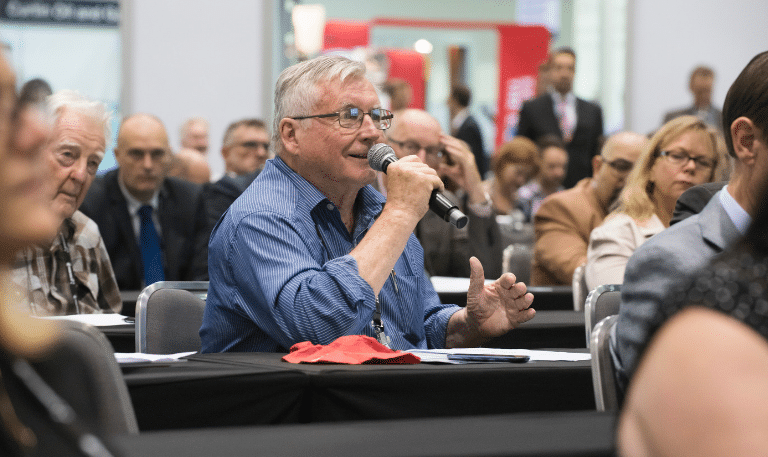Talent and technology key to the subsea industry’s future according to AOG stakeholders
A decline in student enrolments in engineering courses, in particular from Australian students should be ringing alarm bells according to a report by Engineers Australia.
The 2019 report ‘Australia’s Next Generation of Engineers’ tells us that until 2007, when strong demand for engineers developed domestically, annual entry-level course completions failed to increase with any significance.
Following this was eight years of steady growth culminating in a record level of graduations; however, since 2015 completions have been back on the way down.
Most concerning is the contraction in domestic student intake and completions.
In contrast to this, undergraduate and postgraduate completions by international student has been on the rise.
According to Engineers Australia, international students have increased their share of entry-level commencements from 23.5 per cent to 34.3 per cent since 2001. Though significant, this growth seems minor when compared to the astonishing increase in postgraduate student intake. In 2001, international students made 40.6 per cent of commencements in postgraduate engineering courses. By 2017, this share had increased to 74.4 per cent.
While this trend is apparent across the board, it’s especially evident in the subsea engineering field. Subsea engineering is arguably one of the most technically challenging aspects of the offshore oil and gas industry. With a vast proportion of Australia’s gas deposits located at great distances offshore, in deep-water, and in extreme conditions, having these skills locally available is vital.
According to Marius Martens, Chairman of Subsea Energy Australia, growing and engaging with the next generation of engineers is crucial to ensure the longevity and sustainability of the subsea industry.
“Our young engineers are the future of the subsea industry, and it’s critical to our businesses to attract them, our responsibility to nurture them, and our duty to excite them with the possibilities of this extraordinary industry,” said Mr Martens who will be Chairing the ‘focus on processing’ session on day one of the Subsea Forum at the Australasian Oil and Gas Conference and Exhibition (AOG) on 13 March at the Perth Convention and Exhibition Centre.
Research and technology are essential
Academia and industry alike are quick to recognise the importance of leading the world in research and technology to secure economic viability, reinforce Australia’s reputation as a centre of excellence in LNG technology, and to attract the best minds.
The University of Western Australia recently launched a specialist subsea engineering centre specifically to drive research into new technologies for offshore oil and gas production.
In partnership with operators Chevron Australia and Woodside Energy, the Centre for Long Subsea Tiebacks will further develop Western Australia’s global reputation in deep water energy production.
UWA Vice-Chancellor Professor Dawn Freshwater said the Centre for Long Subsea Tiebacks would further establish The University of Western Australia as a world-leading hub for subsea engineering and inspire the next generation of leaders through real-world research and teaching excellence.
“The Centre for Long Subsea Tiebacks will be an important hub for connecting research and industry, offering a unique collaborative environment that will equip our researchers with the expertise to address the pressing challenges of Australia’s energy security and strengthen our contribution to the global LNG market,” Professor Freshwater said.
Undeniably, the development in technology, and its efficiency, has led to a recent rise in deep-water exploration. Businesses not only in Australia but worldwide are racing to understand how these reservoirs can be economically brought into production.
One such technology is the emergence of ocean glider systems, opening up new possibilities for ocean observation and monitoring. The capabilities of ocean glider systems continue to expand, not just through passive acoustic monitoring during seismic operations and hydrocarbon seep surveys but also uses such as leak detection and spill monitoring. One of the attractions provided by ocean gliders is their ability to stay at sea for months at a time, monitoring vast expanses in deep-water in incredibly remote locations.
Australian-based business Blue Ocean Monitoring is leading the way in utilising new technology in ocean glider systems. Blue Ocean Monitoring has carried out both multiclient and self-funded geochemical surveys offshore Papua New Guinea and offshore Western Australia.
In the latter survey, conducted in 2017 in Western Australia’s Browse Basin, the company used more comprehensive sensors (not previously used on gliders) to provide a higher level of hydrocarbon detection. Importantly, the results concurred with Geoscience Australia data and were peer-reviewed by CSIRO.
“The oceans are a vast and largely underexplored space, but with these technologies, we’re able to learn much more, without the large overheads, associated with traditional survey techniques,” said Ramsay Lind, General Manager – EMEA at Blue Ocean Monitoring who will be exhibiting their technology at AOG from 13 March to 15 March.
With world-class challenges such as our extreme conditions, must come world-leading technologies for all aspects of the subsea energy sector. Attraction and retention of talent, specifically local talent must be a priority equally for academia, industry and government in Australia.
AOG will open from 13-15 March, 2019.
Registration gives you free access to the exhibition and three day conference, and skips the $20 door fee. Register here.
You may also like
-
Stay up to date with the latest news, industry insights and AOG Energy updates.
- Subscribe

